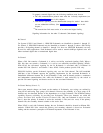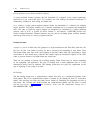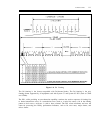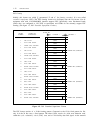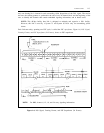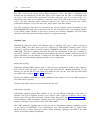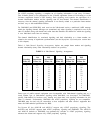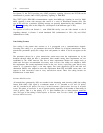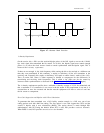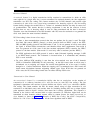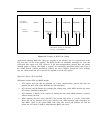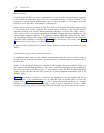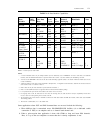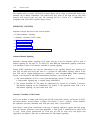
INTRODUCTION
1-15
For AT&T proprietary signaling, a complete set of signaling information is sent every 24 frames.
This 24-frame period is not synchronized to the 12-frame superframe format of D4 framing or to the
24-frame superframe format of ESF framing. Each signaling word contains the equivalent of a
channel identification number and the signaling state for that channel. The channel identification is
necessary since the channel signaling information is not directly related to a particular frame number
and does vary as with multilinked facilities.
For DMI-MOS (and ISDN-PRI), each word on the 24th-channel carries a multiword LAPD message
within the signaling channel. Messages are transmitted only when signaling is required for one of the
other 23 channels along with header and trailer data that identifies the channel for which the signaling
is sent. Individual words have no meaning.
The channel identification, its associated signaling, and their relationship to a frame number are
related to the concept of superframe synchronization (see the Superframe Synchronization section later
in this chapter).
Table 1-1, 24th-Channel Signaling Arrangement, depicts one sample frame number and signaling
channel relationship (many other relationship rotations are possible).
TABLE 1-1. 24th-Channel Signaling Arrangement
D4
ESF
D4
ESF
Signaling Superframe
Superframe
Signaling
Superframe
Superframe
Frame No. Frame No.
Frame No. Frame No. Frame No. Frame No.
1 11 7
13 11 19
2 12
8
14
12
20
3
1 9
15 1 21
4 2
10
16
2
22
5 3
11
17
3
23
6 4
12
18 4 24
7
5
13
19
5
1
8
6
14
20
6
2
9 7
15
21
7 3
10
8
16
22
8
4
11
9
17
23
9 5
12 10
18
24
10
6
Some types of public network equipment were incompatible with 24th-channel signaling and, as a
result, another type of 24th-channel signaling called DMI-BOS, was developed. For DMI-BOS,
specific 24th-channel bit locations carry framing and alarm data, and signaling information for the
other 23 channels. Unfortunately, DMI-BOS and AT&T proprietary signaling are not compatible.
DMI-BOS must be used only for connections to host computers and other vendor’s equipment that
meets the DMI technical specification for BOS.
For System 85, the ANN11B and ANN11C support only AT&T proprietary signaling. The
ANN11D and ANN11E supports both AT&T proprietary signaling and DMI-BOS. The ANN11D
and ANN11E defaults to DMI-BOS, but automatically switches to AT&T proprietary signaling
whenever the distant end supports only AT&T proprietary signaling.





